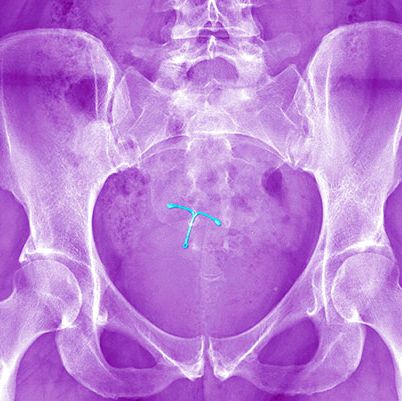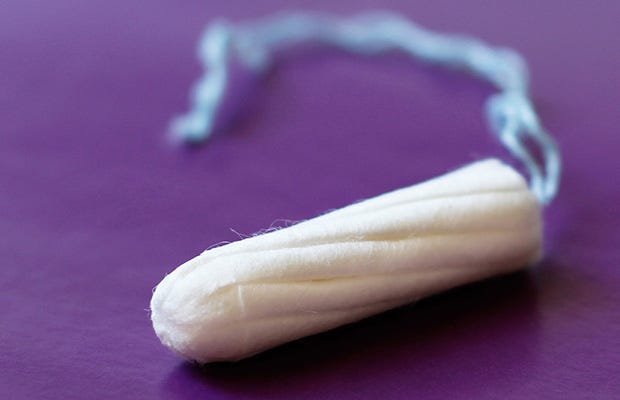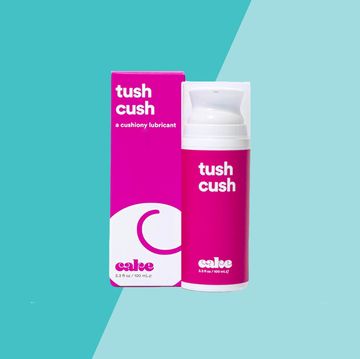After my daughter was born, I had no desire to go back on the Pill. I wanted something easy, reliable, and hormone-free (more on that in a minute). The ParaGard IUD fit the bill perfectly. And while there are some downsides, I have no regrets.
As a health reporter, I've listened to ob-gyns rave about IUDs for years. This tiny, plastic, T-shaped device—it's about the size of a quarter—sits in your uterus, where it prevents sperm from fertilizing any eggs for many years. It's inserted by a gynecologist, midwife, or nurse practitioner during a quick, in-office procedure; no anesthesia or advance prep is required.
IUDs have been popular in Europe for quite some time, and Americans are finally catching on: About 4.4 million women here are now using either an IUD or another long-acting reversible contraceptive (LARC), such as an implants.
Still, you may have questions: Are IUDs really as good as the Pill or condoms? Are they safe? And, not unimportantly, does getting one put in hurt? Read on for the straight scoop. (Want to balance out your hormones and lose weight? Then check out The Hormone Reset Diet to start feeling and looking better.)
1. IUDs are more effective than the Pill.
If you really don't want to have a baby, the IUD is a pretty smart bet. It's more than 99% effective at preventing pregnancy, which puts it up there with getting your tubes tied or having your guy get a vasectomy. The Pill, for comparison, is 92-97% effective. Condoms don't even come close—they're only 84% effective—though you should still use them (perhaps in addition to an IUD) if you have multiple partners.
2. Getting one put in isn't always painful.
I'm a big baby when it comes to pain, but when I got my IUD I barely felt anything at all. I was also surprised by how quick it was: The procedure was over in less than 5 minutes. That said, many women do experience cramping, which may last for a few minutes or a few days. Docs say that women who have had children may be less likely to suffer, but that's not always true: One mom friend swore it hurt more than childbirth. Some people also get dizzy, says Vanessa Cullins, MD, vice president for external affairs at Planned Parenthood Federation of America, so you may want to bring a friend who can drive you home after.
There's no way to guarantee who will find IUD insertion painful, but you can take some Aleve or Advil 30 minutes or so beforehand to reduce the risk. "For some women, insertion during their period works better, because the cervix is a bit more open," says Mary Jane Minkin, MD, a clinical professor of obstetrics, gynecology, and reproductive sciences at Yale School of Medicine.
3. An IUD might make your periods heavier...or your period may disappear altogether.
There are several IUDs on the market, and there are various pros and cons to consider. The biggest factor is whether or not you want hormones: Most IUDs (including Mirena and Skyla) are coated with progesterone, so they work by making your cervical mucus hostile to sperm. "As I tell younger women, it says to the sperm, 'Don't even think about it,'" says Minkin. Hormonal IUDs come with the nice perk of lightening your periods: About 80% of women who get a Mirena will find that their periods only last a day or two; a lucky 20% will have no periods at all, says Minkin.
ParaGard, on the other hand, provides birth control with no hormones. It works by releasing tiny amounts of copper, creating an inhospitable environment for sperm. ParaGard also lasts the longest of the available IUDs (up to 10 years!). The downside: "Women may experience heavier periods and more menstrual cramping," says Cullins. Personally, I've also noticed that my periods last a lot longer than they used to.
4. They're super-safe.
Your mom or grandma might think that IUDs are dangerous, but that's not true. Blame the bad rap on the Dalkon Shield, an old IUD that led to pelvic infections, pelvic inflammatory disease, and infertility. This faulty model was taken off the market in 1974, and "current versions of the IUD don't have any of those problems," says Cullins. "Both the World Health Organization and the American Medical Association named the IUD among the safest, most effective, and least expensive long-lasting reversible methods of birth control available to women."
MORE: 5 Reasons It Hurts Down There
5. They're practically maintenance-free.
Forget taking a pill every day, changing a ring every month, or getting a shot every 3 months. Once an IUD goes in, you're pretty much good to go for anywhere from 3 to 10 years (depending on the model you choose). That's largely why they're so effective: It's pretty hard to mess up when you weren't really supposed to be doing anything in the first place.
Many physicians do tell patients to check IUD strings once a month to make sure the device is still where it should be. To do that, you're supposed to reach your finger toward your cervix and then feel for the strings. But my doc essentially told me not to worry about it; IUDs get expelled very rarely, and if yours does you'd probably know about it. (It would most likely show up in the toilet during your period.) That's especially true once you've had an IUD in place for a few months.
6. Yes, you can get one even if you never had a baby.
Years ago, women who hadn't had kids were told IUDs were not for them. That rule no longer exists. "IUDs are safe for most women, including teens," says Cullins. If you've never been a mom, Minkin says you may want to consider Skyla because it's physically smaller than other IUDs. Although none of them are big (think half the size of a sugar packet), Skyla is even tinier—which can make insertion more comfortable in women who haven't had their cervix stretched out by a baby.
7. Your partner shouldn't be able to feel it.
This honestly never occurred to me, but apparently it's something many women are concerned about. It turns out the answer is a little more complicated than I thought, but ob-gyn Jennifer Gunter, MD, does a good job of explaining it on her blog. Here's what it boils down to: If you have a ParaGard, it's almost impossible for your guy to feel it because the string is so soft. Mirena comes with a thicker string, so your guy could theoretically detect it—but that's only true if your provider cuts the string too short. (It needs to be long enough to curl up a little around your cervix; otherwise, it will stick straight out.) You can avoid this problem by choosing a doctor who's had plenty of experience inserting IUDs. (Here are 10 red flags you should be wary of at the gynecologist's office.)
8. It's cheap.
If your insurance covers it—and most do, thanks to the Affordable Care Act—your cost will be $0. If you do have to pay, you're looking at anywhere from $500 to $1,000. That might sound steep, but when you divide it over the number of years you'll keep the IUD and compare it with the cost of other forms of birth control, it's really a bargain.
9. You can still get pregnant later.
If you're planning to get pregnant in the next year or two, getting an IUD might not be worth it. But if you're on the fence—or if you think that your first (or next) baby is at least 3 years away—you shouldn't be dissuaded: You can have an IUD taken out at any point, and it doesn't matter if the device was designed to last 3 years or 10. Your fertility will return to its normal status right away, so you could even get pregnant the following month. "If 100 women have their IUDs removed, 85 will be pregnant within a year," says Cullins. Just don't try to remove it yourself: The procedure is simple for trained experts, but trying to do it yourself can cause serious damage.

















